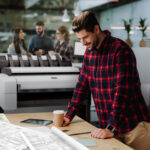
Four ways to streamline costs under National Insurance policy changes
12 December 2024
The Big Switch Off 2027 – 7 Advantages of Switching Now
16 December 2024
Four ways to streamline costs under National Insurance policy changes
12 December 2024
The Big Switch Off 2027 – 7 Advantages of Switching Now
16 December 2024
What is ITSM?
IT Service Management (ITSM) involves delivering technology-related support to businesses who may be struggling to keep their devices secure, efficient and up-to-date. This framework offers end-to-end solutions depending on what that company needs, capable of helping with design, creation, delivery and long-term support. This can be a fantastic way to ensure your IT team has the space to do their best work while protecting your IT infrastructure.

Defining IT Service Management (ITSM)
IT Service Management, often shortened to ITSM, is the structured approach organisations use to design, deliver, manage, and improve IT services. In practice, it means treating IT as a service that supports the wider business rather than a set of tools or standalone technologies.
An ITSM system refers to the software platforms and tools used to deliver this service approach, such as platforms for ticketing, asset management, or incident response. Put simply, ITSM answers the question “what is a service management approach to IT?” by providing structure, processes, and measurable outcomes.
If you’re considering whether or not IT Service Management is something your business could benefit from, this blog will explain in depth what could be involved and how it could help you reduce maintenance costs while staying competitive and innovative.
We will cover the following subjects:
- ITSM Frameworks
- How ITSM Compares to Other Approaches
- What is an ITSM Process?
- Applying ITSM to Different Industries
- What is the Value of ITSM?
- What are ITSM Best Practices?
After this, you should have a clear understanding of not only what ITSM is, but how it is applied and how you can get the most out of it.
ITSM Frameworks
Defining IT management can be difficult, because it is a broad term that encompasses a lot of different ideas.
In order to offer businesses a structured solution for their IT infrastructural problems, there are different frameworks that IT service managers might adopt, including:
- COBIT (Control Objectives for Informational Technologies), created in 1996 and still widely used for regulatory compliance, risk management and aligning IT strategy with organisational goals. The most recent version was introduced in 2012.
- eTOM, or the Business Process Framework.
- MOF(Microsoft Operations Framework), which as stated is a framework developed specifically by Microsoft for Microsoft products.
- ISO/IEC 2000, an international standard for IT Service Management created in 2005.
- ITIL (Information Technology Infrastructure Library), a set of practices developed in the 1980s analysing everything from service strategy to service operations. You can find certification bodies that train people around ITIL specifically
Each framework has a slightly different focus, so understanding the differences between these frameworks will help you understand what you’re in need of.
How ITSM Compares to Other Approaches
Difference Between ITIL and ITSM
ITIL is one of the most widely adopted frameworks within ITSM, but the two are not interchangeable. ITIL provides a detailed set of practices and guidance for managing IT services, whereas ITSM is the overarching discipline that puts those practices into action. In simple terms: ITIL is a framework, while ITSM is the practice of applying it (alongside other frameworks).
Difference between ITSM and DevOps
These are both IT service practices, but ITSM and DevOps take quite different approaches to improving services and processes. While ITSM generally uses traditional auditing and risk management processes to identify opportunities for improving, DevOps has a keener focus on how a business can be structured so that development changes can be implemented at a faster pace. The primary concerns of DevOps are speed and innovation.
Difference between ITSM and ESM
ITSM and ESM (Enterprise Service Management) are very different managed services. Where one digs into technology and a company’s IT infrastructure, the other has a much wider scope and focuses on all facets of a company. While the IT department might be considered with ESM, other departments including HR, marketing and finance are also assessed to create a more holistic improvement plan.

What is an ITSM Process?
An ITSM process is a defined set of steps that IT teams follow to deliver services effectively, consistently, and in alignment with business goals. These processes turn ITSM from a concept into practical actions.
In the same vein that there are different ITSM and service management frameworks you could adopt depending on your company’s unique needs, there are also different processes you can adopt once you know the specific areas of your IT infrastructure you want to improve.
Here are a few examples.
- Service Request Management
- IT Asset Management
- Knowledge Management
- Incident Management
And this is just the beginning - depending on your company’s needs, other processes your ITSM provider may recommend include:
- Change Management, to minimise IT service disruptions if changes are made to critical systems.
- Configuration Management, to track configuration items so there is a central repository for IT assets.
- Demand Management, to accurately forecast and understand the IT needs of an organisation.
- Financial Management, to manage the service provider's budgeting, accounting and charging requirements.
- Service-level Management, to track SLAs and promote compliance with agreed-upon standards to enhance customer satisfaction.
IT service managers will work with their clients when considering ITSM processes, assessing which processes they could benefit the most from and tailoring their strategy around that.
If you’re interested in learning more about different ITSM processes and which ones are right for a business of your scale with your unique needs, contact Apogee today.

Applying ITSM to Different Industries
Some of the processes listed above may have struck a chord - no matter which industry your organisation is in, there are many ways ITSM can be applied to your sector. Here are some examples:
Finance: Mistakes have enormous consequences when you’re handling money - change management would be helpful to stop system changes from affecting accounts if your organisation is in banking, and knowledge management can help streamline information management so accounts are easier to find and navigate.
Retail: Organisation is what makes and breaks consumer trust in the retail industry. There are several ITSM processes you can use to tighten up your organisation - Capacity Management is great for managing inventories and store staffing, and service catalog management is good for organising products in an internal database.
Education: Keeping everything safe, scalable and running smoothly for students is a top priority if you’re an IT manager at a school or university. IT asset management would be valuable to track your hardware (computers, projectors and more) to ensure they stay in good working condition.
Healthcare: Organising patient information and managing issues and preventing information from getting lost - problem management is necessary to track and resolve issues around patient care and medical devices, and prepare long-term corrective actions to avoid repeated incidents.
What is the Value of ITSM?
The value of ITSM is that it offers both fantastic short-term results and establishes sustainable changes that benefit the structure and culture of the organisation long-term.
Short-term, IT service management:
- Cuts down maintenance costs and guarantees fast fixes for your hardware
- Enforces standardisation for easy compliance and better service
- Frees up your IT department to focus on more impactful tasks
- Enables your staff to be more productive
- Offers insightful reporting to identify, resolve and ultimately reduce issues
At the same time, working with IT service managers encourages your company’s leadership to adopt a growth mindset and challenge inefficient infrastructures and processes in place. This is key to embracing digital transformation and staying competitive and in touch with what your customers need for a long time.
Read our blog on the Benefits of Digital Transformation for more information.

What are ITSM Best Practices?
If you decide that ITSM is for you, here is how it might work.
IT service management companies like Apogee will perform a full technology audit, digging into your current processes and devices, and develop a personalisation solution designed to address your top priorities and aid your KPIs. This will also be tailored to the unique needs your organisation may face, depending on which sector you’re in.
Once you have agreed on specific IT solutions like Buy Back IT, your IT service managers will install all the new hardware and software involved, and then they will monitor it regularly for health and security updates, intervening when updates and repairs are due. The life-cycle of every device is accounted for.
You can bring in an ITSM company as a short-term solution to dismantle and rebuild your IT infrastructure, or as a long-term solution to keep your IT infrastructure fully-optimised for the length of the partnership. To find out more, explore Apogee’s Managed IT Services.
How We Can Help
To learn more, please fill out the contact form.
Latest insights
Keep up to date with all the latest in Managed Workplace Services.
By submitting this form, you acknowledge that you have read and understand the Apogee Privacy Statement.
Data Privacy Policy | Cookies Policy











































